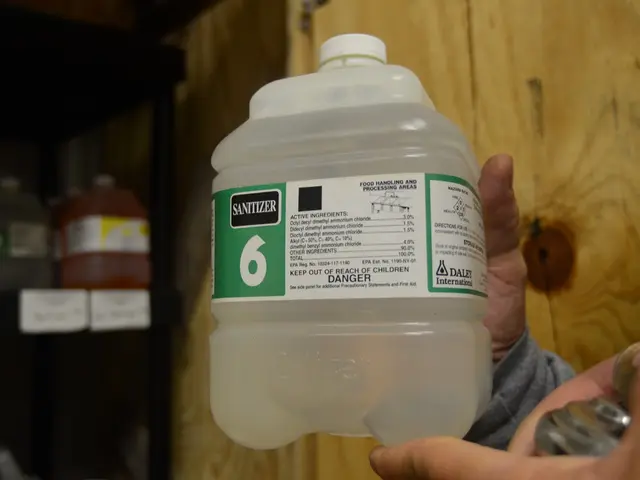Newborn Growth: Defining the Standard
Preemies, babies born before 37 weeks of gestation, face unique challenges in their early development. Compared to full-term babies, they are at a higher risk of developing long-term health complications and may progress at a different pace in reaching developmental milestones.
One of the main difficulties preemies face is in coordinating their sucking, swallowing, and breathing while feeding. This can lead to feeding difficulties and potential nutritional issues. However, healthcare providers play a crucial role in offering valuable insights and guidance during regular check-ups, assessing a preemie's physical growth, motor skills, cognitive abilities, and social-emotional development.
Preemies often struggle to maintain their body temperature due to their lack of body fat and underdeveloped regulatory mechanisms. This vulnerability underscores the importance of providing a warm and consistent environment for them.
Each preemie is unique, and their individual differences should be celebrated rather than seen as setbacks. Understanding preemie development helps parents and caregivers recognize potential delays or issues early on, enabling prompt intervention and support.
Early intervention services, designed to support preemies and their families, can provide therapies, resources, and guidance to address any developmental delays or challenges. Working with healthcare professionals, preemies can receive specialized therapies such as physical, occupational, and speech therapy to address any challenges they may face in their development.
Common developmental milestones for preemies are generally similar to those of full-term infants but are assessed based on their *adjusted age*—the chronological age minus the number of weeks born early. Key milestones unfold roughly as follows:
- At 7 to 9 months adjusted age, babies usually sit without support, start crawling, pull to stand, develop fine motor skills like picking up objects with thumb and finger, babble with varied sounds, respond to their name, and engage socially with familiar people through simple games like peek-a-boo. - At 10 to 12 months adjusted age, babies often cruise along furniture, may take first steps, manipulate small objects with pincer grip, say simple words like “mama” or “dada,” follow simple directions, and participate in social interactions like waving goodbye or imitating gestures.
Common red flags indicating potential developmental delays in preemies include:
- Inability to hold head up by 2 months (adjusted age) - No crawling by 12 months (adjusted age), which could signal motor delays or neurological issues - Failure to sit without support by 9 months - Lack of babbling or response to name by 9-12 months - Absence of simple words or social interactions such as waving or imitation by 12 months
Children born before 34 weeks are at higher risk of cognitive and memory deficits, including lower scores in vocabulary, working memory, and recall tasks, compared to full-term peers. Close monitoring using adjusted age and early intervention if red flags appear are critical.
Resilience plays a significant role in a preemie's ability to overcome challenges and adapt to their environment. Parents and caregivers can benefit from the guidance and support offered by healthcare providers, creating a network of care that fosters optimal growth for preemies.
In summary, developmental milestones for preemies are monitored using corrected age, with emphasis on gross motor, fine motor, language, cognitive, and social skills. Red flags include motor delays (head control, crawling, sitting), language delays, and poor social responsiveness, signaling the need for prompt professional evaluation and support. Early intervention can lead to better outcomes for preemies, ensuring they receive the best possible start in life.
[1] National Institute of Child Health and Human Development (NICHD). (2021). Milestones: Your Child by Five. Retrieved from https://www.nichd.nih.gov/health/topics/development/pages/default.aspx [2] National Centre for Biotechnology Information. (2018). Prematurity and Cognitive Development: A Systematic Review and Meta-Analysis. Retrieved from https://www.ncbi.nlm.nih.gov/pmc/articles/PMC5987681/ [3] Zero to Three. (2021). Developmental Milestones. Retrieved from https://www.zerotothree.org/resources/556-developmental-milestones [4] American Academy of Pediatrics. (2018). Caring for Your Baby and Young Child: Birth to Age 5. Retrieved from https://www.healthychildren.org/English/ages-stages/baby/Pages/Caring-for-Your-Baby-and-Young-Child-Birth-to-Age-5.aspx
- Early intervention in education and health-and-wellness is essential for preemies, as they are at a higher risk of developing long-term health complications and may progress at a different pace in reaching developmental milestones.
- Adequate nutrition plays a vital role in the development of preemies, as they often face feeding difficulties due to their inability to coordinate sucking, swallowing, and breathing properly.
- Emotional development and mental health are just as important as physical growth for preemies, and parents should look out for signs of behavioral changes or delays.4.Healthcare providers can offer valuable guidance during regular check-ups on a preemie's development milestones, including cognitive abilities, motor skills, and social-emotional development.
- Providing a safe and consistent environment for preemies, including maintaining a warm temperature, can help them develop and grow properly.
- It is crucial to celebrate the unique differences of each preemie and to recognize potential delays or issues early on, as this enables prompt intervention and support.
- Services aimed at supporting preemies and their families, such as physical, occupational, and speech therapy, can address any developmental delays or challenges the preemie may face.
- Key developmental milestones for preemies are assessed based on their adjusted age, which accounts for the number of weeks born early.
- Parents and caregivers can foster optimal growth for preemies by working closely with healthcare providers, following their guidance, and creating a network of support for the growing child.








